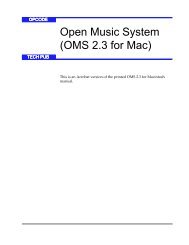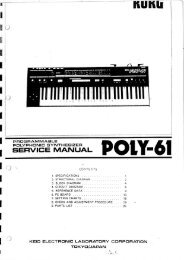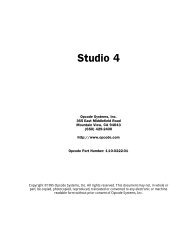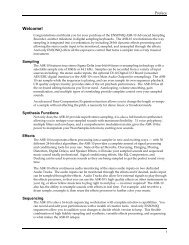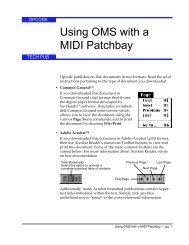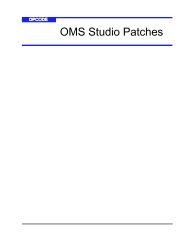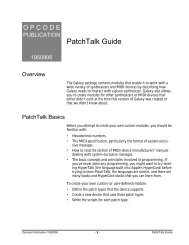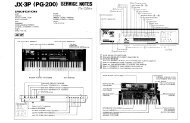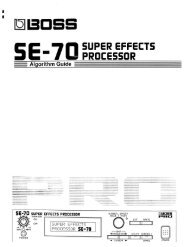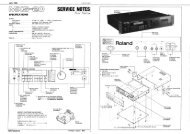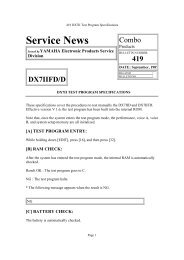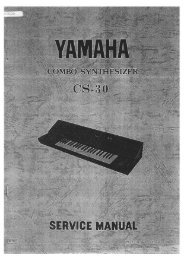Vision and Studio Vision Pro Version 4.1 Manual ... - House of Synth
Vision and Studio Vision Pro Version 4.1 Manual ... - House of Synth
Vision and Studio Vision Pro Version 4.1 Manual ... - House of Synth
Create successful ePaper yourself
Turn your PDF publications into a flip-book with our unique Google optimized e-Paper software.
CHAPTER 5: Acadia: Recording Audio<br />
Disabling a Record File<br />
To set your input levels:<br />
You can disable audio recording by clicking<br />
the Record Enable Indicator again to<br />
turn it <strong>of</strong>f. This lets you record MIDI<br />
tracks without recording audio at the<br />
same time.<br />
Once you’ve assigned a record file to an<br />
input line, you can toggle its Record<br />
Enable on <strong>and</strong> <strong>of</strong>f as desired—you won’t<br />
be prompted by the Save As dialog box.<br />
That dialog box appears only if you<br />
haven’t assigned a record file to the input<br />
line.<br />
<br />
<br />
Play or sing into a microphone that’s<br />
connected to the specified audio<br />
input.<br />
Look at the bargraph for the input<br />
whose volume you wish to set.<br />
Bargraph shows input<br />
record level<br />
Set Record Levels<br />
This section discusses how to set recording<br />
levels.<br />
The bargraph in the Record Monitor<br />
Window functions like an LED display.<br />
Whenever the Record Monitor Window is<br />
open, its bargraph displays the amplitude<br />
for incoming signals.<br />
<br />
Adjust the level <strong>of</strong> the signal you’re<br />
sending to <strong>Vision</strong>.<br />
To obtain the best signal-to-noise ratio,<br />
adjust the signal so that its peak amplitude<br />
is as high as possible, but below<br />
0 dB. In digital recording, you cannot<br />
record above 0 dB without clipping the<br />
audio.<br />
Avoiding Clipping<br />
If the amplitude <strong>of</strong> the audio signal<br />
exceeds 0 dB, the waveform becomes<br />
chopped <strong>of</strong>f <strong>and</strong> flat (like a square wave),<br />
<strong>and</strong> the audio will sound buzzy <strong>and</strong> distorted.<br />
This is called “clipping,” which<br />
you will most always want to avoid. If<br />
you’re accustomed to analog recording,<br />
you’ll soon notice that digital clipping is<br />
harsher <strong>and</strong> much less tolerable than<br />
analog clipping.<br />
<strong>Vision</strong> & <strong>Studio</strong> <strong>Vision</strong> <strong>Pro</strong> — <strong>Version</strong> <strong>4.1</strong> <strong>Manual</strong> Supplement 27



